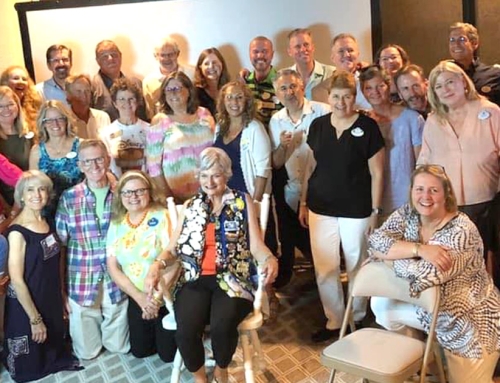Hard conversations can happen anywhere. Whether it’s a medical exam room, your boss’s office or in your child’s classroom, there are times when the news is sometimes hard to hear. The tumor we found is cancerous. We regret to tell you your job has been eliminated. Your child isn’t reading at her grade level and we may have to hold her back a grade.
No one wants to hear bad news. The worst part is that not many people take the time to soften the blow. Too often, we cut right to the chase and the news stings like the quick rip of a bandage of a still-healing wound. Why do we do this? Is it force of habit? Maybe. Laziness? Perhaps. But I suspect it might have a bit to do with empathy and how skilled the bearer of the bad news is at tapping into that empathy.
Our Human-Business-Human® (HBH) tool can help flex the muscles of empathy, improve communication and help reduce a person’s fear, anxiety and uncertainty. HBH is pretty simple: begin and end every interaction by connecting in a meaningful way. Person to person. Human to human. The best part of HBH is that it’s more than just a really nice thing to do. It can help alleviate the feelings Florence Nightingale spoke of so long ago: “Apprehension, uncertainty, waiting, expectation, fear of surprise, do a patient more harm than any exertion.”
This video is a great example of the HBH technique in action. And even though it’s an example from outside healthcare, I think it’s an example we can all relate to: our kids. When our child is struggling in school we want to help, but first, we’re scared. Will he be held back? Is she failing? Shouldn’t he be at the same level as the other kids? Am I to blame?
So imagine you’re the parent. You sit down opposite your child’s teacher for a meeting to discuss an individualized education plan (IEP) to help your child get what they need to succeed. The meeting could go one of two ways: either the teacher will jump right to business, or they could add a little “human”, employ empathy and reassurance, and let the parent know their child is in good hands.
By beginning this hard conversation “on the human,” the teacher sets the stage to discuss the important business at hand by helping alleviate any stress or anxiety the parent may be experiencing.
First thing’s first: your child is amazing. Though occasionally focusing on flaws allows us to best serve a child with disabilities, our disabilities do not define us. Period.
Posted by Speech and Language Kids on Thursday, December 14, 2017
(video source: Speech and Language Kids https://www.youtube.com/user/speechandlangkids/videos )






Leave A Comment